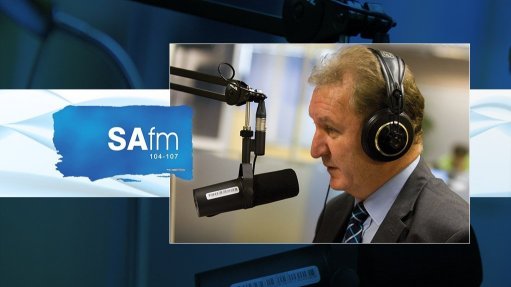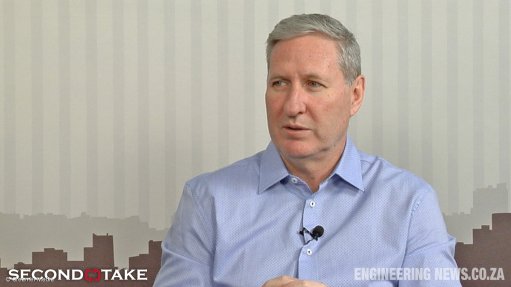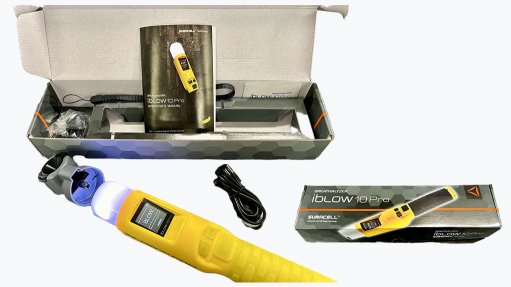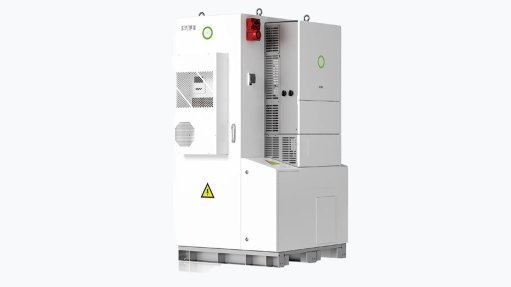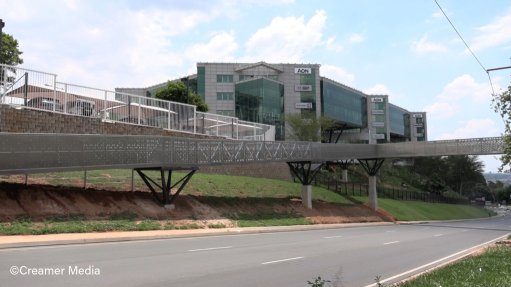All eyes on the modern DCS platform
This article has been supplied.
By: Kobus Vermeulen - Direct Sales Executive, Process Automation at Schneider Electric
Enough cannot be said about both the historical and current importance of Distributed Control Systems (DCS) and its role in industrial automation. It is therefore only fitting that we talk about its continuous evolution and future too.
For years, plants have relied on mismatch of small PLCs (Programmable Logic Controllers) and proprietary “black boxes” to manage localised task. And whilst extremely effective (for in its time), these siloed systems often created unnecessary bottlenecks, complexity and rigidity.
In a happy contrast, modernised DCS platforms are no longer confined to hardware-dependent architectures. These systems have evolved to combine the strengths of both PLCs and DCS while adding capabilities that make them more open, resilient, and collaborative.
The abundance of strides
One of the most significant changes has been the advent of virtual controllers, which decouple software from hardware. Instead of tying control logic to a physical controller, it can now run on industrial PCs or virtual machines.
The benefits are tremendous; this change allows plants to deploy systems much faster, reduces dependence on specific hardware, and enables redundancy and failover at the virtualisation layer.
Another advance is the use of containerisation technologies, such as Docker, which allow automation applications to be packaged into portable units that can run consistently across environments. This makes it easier to replicate or scale control logic across different sites, while reducing the risk of system-wide failures.
Containerisation offers the following important benefits:
- Encapsulation – it packages applications along with their dependencies (libraries, configurations, etc.) into a single container.
- Portability - containers can run consistently across different environments, whether it's a developer’s laptop, a test server, or a production cloud instance.
- Isolation – containers run independently of the host system, reducing conflicts between applications.
- Scalability and automation.
Modern DCS platforms are also consolidating multiple design tools in a single, software-defined engineering environment. Again, this integration makes it easier manage projects across their entire lifecycle and allow engineers to deploy updates, remotely.
Furthermore, the use of digital twins adds an additional layer of functionality and value, allowing for changes to be tested and validated before deployed in live operations
The integration of edge and cloud computing has also reshaped the way plants operate. Real-time analytics at the edge can provide immediate insights into performance, while cloud-based monitoring enables centralised optimisation and collaboration across sites.
Modern DCS are indeed more agile; plants can scale at will and can even adopt pay-as-you-go models. At the same time, virtualisation and containerisation make it easier to apply cybersecurity patches, reduce vulnerabilities, and comply with international standards such as IEC 62443.
Enter AI and real-time analytics
We would be remiss if we don’t place the spotlight on AI and real-time analytics within the context of modern DCS. For one, instead of simply executing pre-set instructions, DCS platforms can now learn and adapt.
AI-driven algorithms, fed by continuous streams of process data, enable predictive maintenance by identifying equipment degradation long before it results in failure. This reduces downtime, extends the life of assets, and prevents costly emergency repairs.
Meanwhile, real-time analytics provide operators with immediate visibility into plant performance, pinpointing inefficiencies and allowing adjustments on the fly to maintain optimal conditions.
These intelligent capabilities also support continuous improvement; by analysing both historical and live data, AI-enhanced systems can uncover recurring issues, recommend corrective actions, and even self-optimise control loops.
Industry lessons and solutions
Across industry, we are seeing the benefits that come with plant-wide standardisation and centralised control. In the chemical sector, multinational manufacturers have achieved significant reductions in engineering hours by adopting unified DCS architectures.
In oil refining, centralised control rooms have allowed multiple process units to be managed from a single location. One large European refinery reported a 30 percent reduction in maintenance costs over five years after consolidating disparate control systems into a harmonised platform.
Pharmaceuticals are also using standardised automation systems to rapidly roll out production expansions across global sites. Centralised recipe management and validation have allowed these manufacturers cut project delivery times by months, while ensuring compliance with strict regulatory requirements.
Schneider Electric’s EcoStruxure Automation Expert (EAE) vendor agnostic architecture represents this shift towards software-defined, open, and future-ready automation. EAE is built on international standards such as IEC 61499 and offers a modular, event-driven approach that makes engineering more flexible and reusable across projects and sites.
It natively supports widely used industry protocols such as Modbus, Open Platform Communications Unified Architecture (OPC UA), and Message Queuing Telemetry Transport (MQTT).
This openness, in turn, reduces integration complexity, lowers engineering costs, and makes it easier to connect legacy and modern equipment from multiple vendors.
Ultimately, our EAE architecture y consolidates automation logic into a single, adaptable platform, bridging the gap between PLC and DCS architectures.
Article Enquiry
Email Article
Save Article
Feedback
To advertise email advertising@creamermedia.co.za or click here
Comments
Press Office
Announcements
What's On
Subscribe to improve your user experience...
Option 1 (equivalent of R125 a month):
Receive a weekly copy of Creamer Media's Engineering News & Mining Weekly magazine
(print copy for those in South Africa and e-magazine for those outside of South Africa)
Receive daily email newsletters
Access to full search results
Access archive of magazine back copies
Access to Projects in Progress
Access to ONE Research Report of your choice in PDF format
Option 2 (equivalent of R375 a month):
All benefits from Option 1
PLUS
Access to Creamer Media's Research Channel Africa for ALL Research Reports, in PDF format, on various industrial and mining sectors
including Electricity; Water; Energy Transition; Hydrogen; Roads, Rail and Ports; Coal; Gold; Platinum; Battery Metals; etc.
Already a subscriber?
Forgotten your password?
Receive weekly copy of Creamer Media's Engineering News & Mining Weekly magazine (print copy for those in South Africa and e-magazine for those outside of South Africa)
➕
Recieve daily email newsletters
➕
Access to full search results
➕
Access archive of magazine back copies
➕
Access to Projects in Progress
➕
Access to ONE Research Report of your choice in PDF format
RESEARCH CHANNEL AFRICA
R4500 (equivalent of R375 a month)
SUBSCRIBEAll benefits from Option 1
➕
Access to Creamer Media's Research Channel Africa for ALL Research Reports on various industrial and mining sectors, in PDF format, including on:
Electricity
➕
Water
➕
Energy Transition
➕
Hydrogen
➕
Roads, Rail and Ports
➕
Coal
➕
Gold
➕
Platinum
➕
Battery Metals
➕
etc.
Receive all benefits from Option 1 or Option 2 delivered to numerous people at your company
➕
Multiple User names and Passwords for simultaneous log-ins
➕
Intranet integration access to all in your organisation









